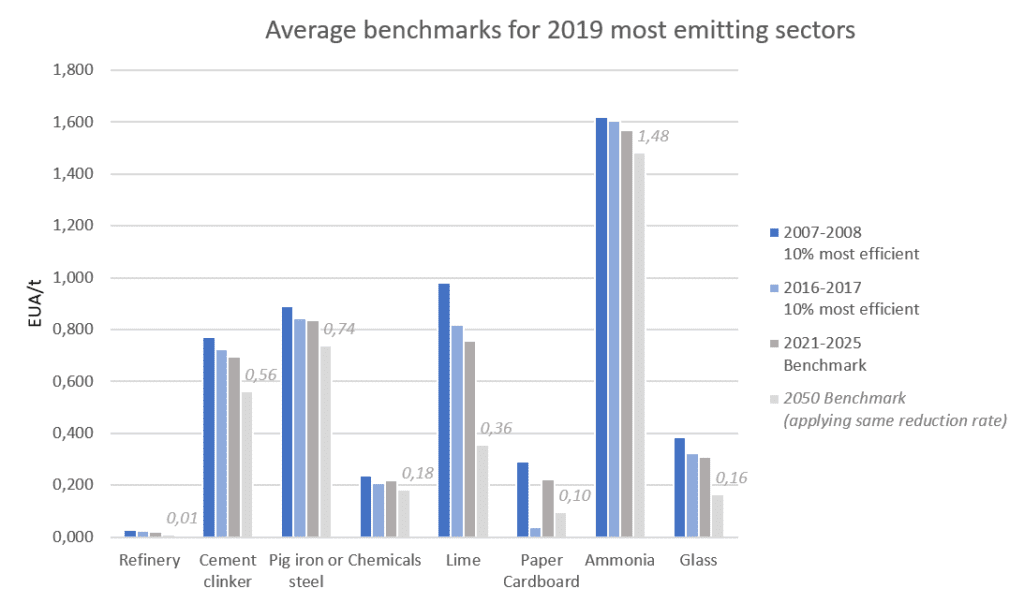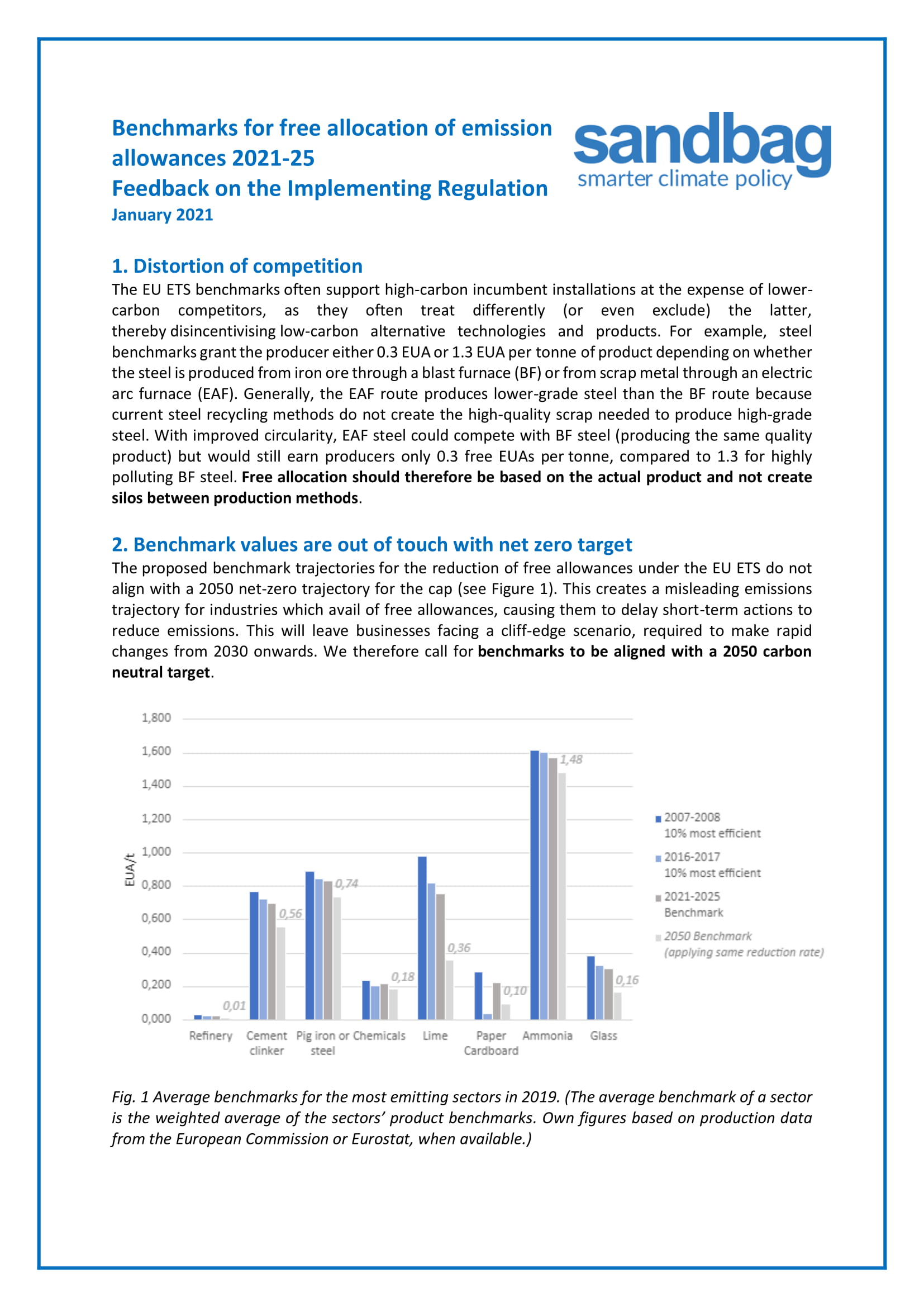Benchmarks and Free Allocation: Details reveal problems in the EU ETS
Sandbag is actively campaigning for changes to the EU ETS benchmarking system and an end to free allocation in the upcoming EU ETS reform. In the meantime, the current EU ETS remains in place. On the 1st January we entered into Phase IV of the EU ETS, and the European Commission has published the benchmark values that will determine free allocation for 2021-25. In our feedback to the Commission, we highlighted a number of persisting problems with the benchmark system.
The EU ETS benchmarks often support high-carbon incumbent installations at the expense of lower-carbon competitors, as they often treat differently (or even exclude) low-carbon alternative technologies and products. This means that there is less incentive for industries to use more carbon-efficient production methods, defeating one of the main aims of the EU ETS.
The proposed benchmark trajectories for the reduction of free allowances under the EU ETS do not align with a net-zero trajectory for the cap (see Figure 1). This creates a misleading emissions trajectory for industries which avail of free allowances. Firms are at risk of delaying short-term actions to reduce emissions because they are relying on a level of free allowances that cannot continue. This will leave businesses facing a cliff-edge scenario, required to make rapid changes from 2030 onwards. We therefore call for benchmarks to be aligned with a 2050 carbon neutral target.

Average benchmarks for the most emitting sectors in 2019. (The average benchmark of a sector is the weighted average of the sectors’ product benchmarks, based on production data from the European Commission or Eurostat, when available.)
The annual reduction rates for the benchmark values are often far behind the industrial reality. This means that installations with greater carbon efficiency will continue to receive large amounts of free allowances for little additional effort. While this can have a decarbonisation incentive effect, there is still considerable room for a higher upper limit to the benchmark reduction rate. This is particularly true for the heat benchmark, which, relying on the 1.6% annual reduction rate, proposes a benchmark of 47.3tCO2/TJ, while the actual intensity of the 10% most efficient plants is 2.8tCO2/TJ.
The EU ETS benchmarks also have consequences exceeding the scope of free allocation within the scheme. One critical example concerns the eligibility and level of support for projects under the Innovation Fund, which are based on the EU ETS benchmarks. According to this rule, some projects that are far from low-carbon may get selected and supported by the Fund.
It is also highly concerning that the data used to determine product benchmarks, for example aggregated production data, is not publicly available. Given the role of the benchmarks in determining free allocation, which essentially represents a public subsidy for polluting industries, the data on which these benchmarks are based should be made available to public scrutiny.
Free Allocation and Benchmarks in the EU ETS
Benchmarks are the measures used to determine how many free allowances are distributed to installations under the EU ETS. Free allowances mean that installations are not exposed to the true carbon cost of the ETS. While free allocation was designed to minimise any risk of carbon leakage for EU-based firms, it generates many other issues, such as dampening the decarbonisation incentive of the EU ETS and reducing the number of allowances which can be auctioned and generate revenue for Member States. In the longer run, relying on free allocation is not a viable way for EU industries to operate, as the number of free allowances available will decrease sharply as the overall ETS cap descends towards net zero.
Free allowances are supposed to cover the minimum amount of CO2 emissions which an installation needs to produce at current technology levels. The 10% most carbon-efficient installations per sector and production method are identified and the average of their collective carbon intensity becomes the benchmark (adapted slightly to account for efficiency improvements over the next five years). All installations within that sector then receive free allowances up to the benchmark level, and only need to purchase EUAs to cover their CO2 emissions above the benchmark. The result is that the majority of big polluters only pay for a small fraction of their CO2 costs.
See Sandbag’s response to the EC consultation here.
Photo by Ant Rozetsky on Unsplash

